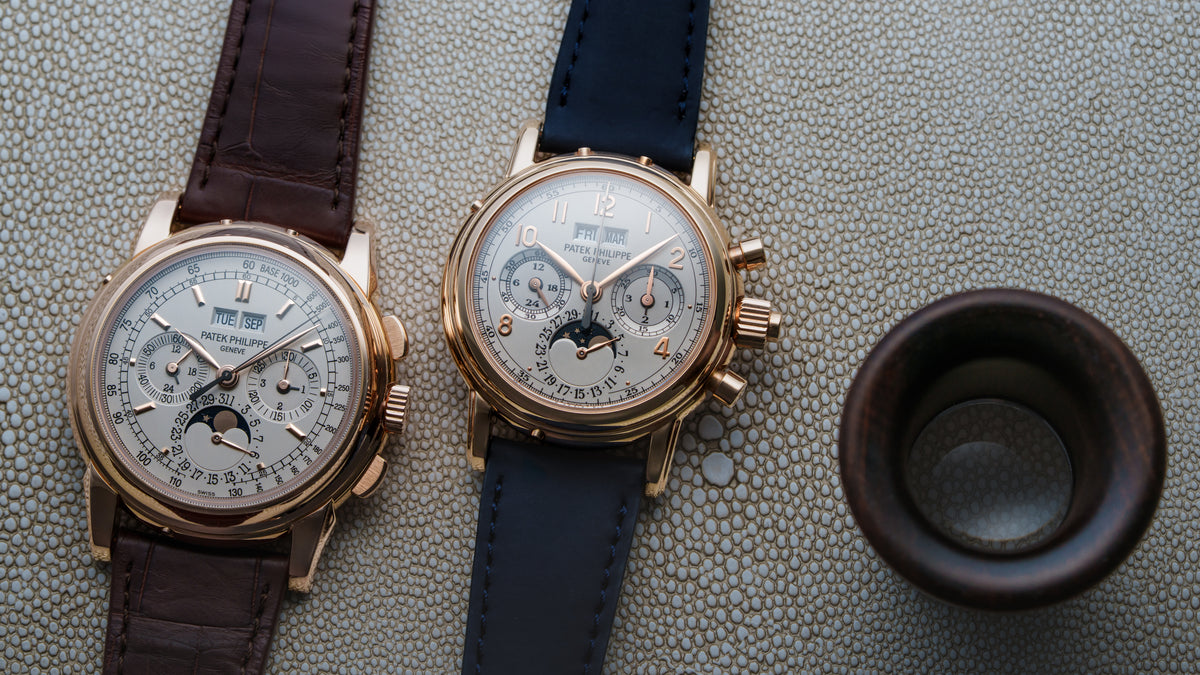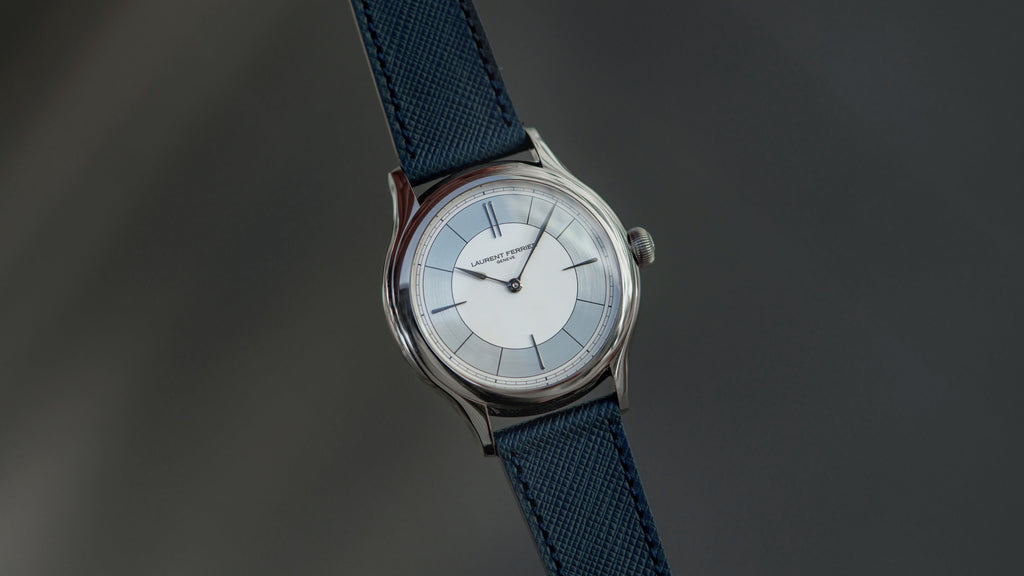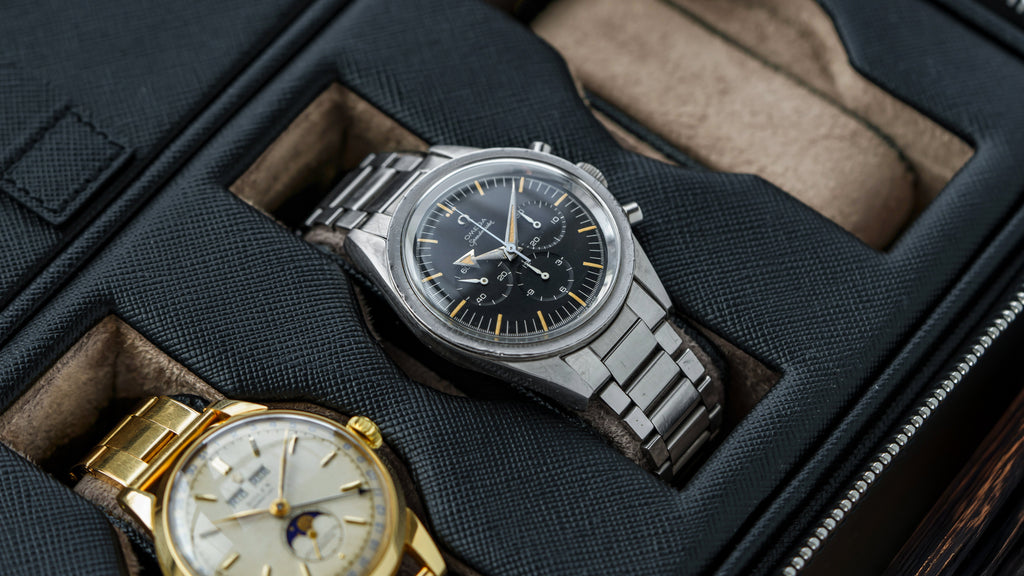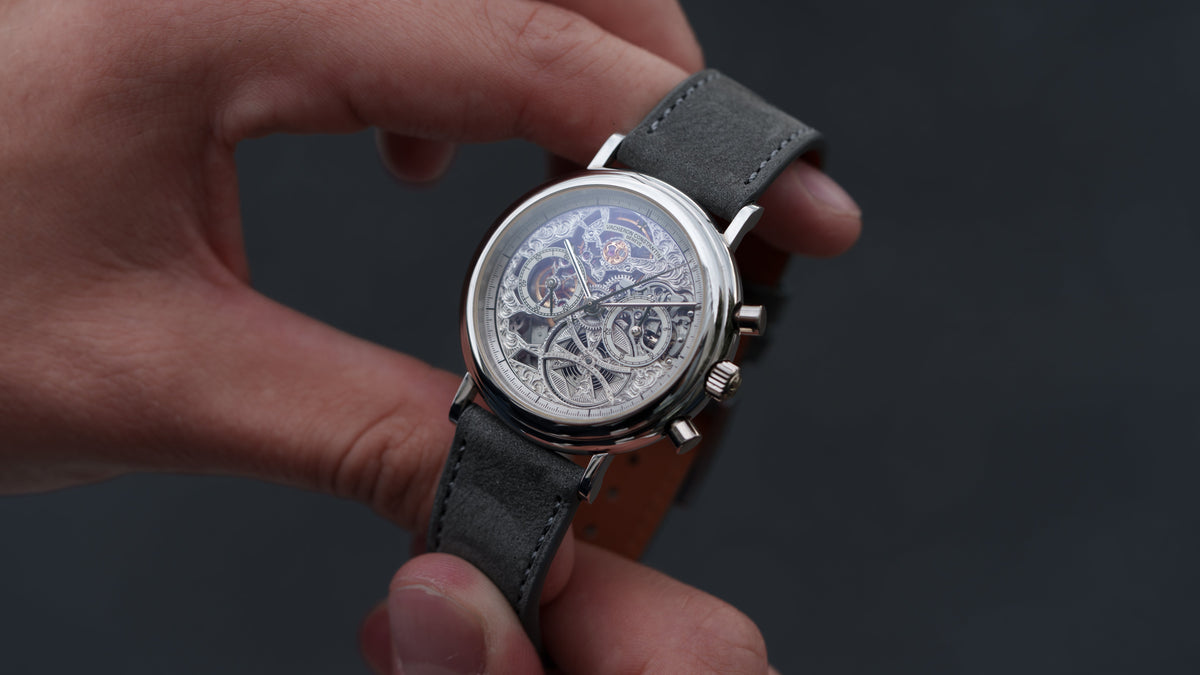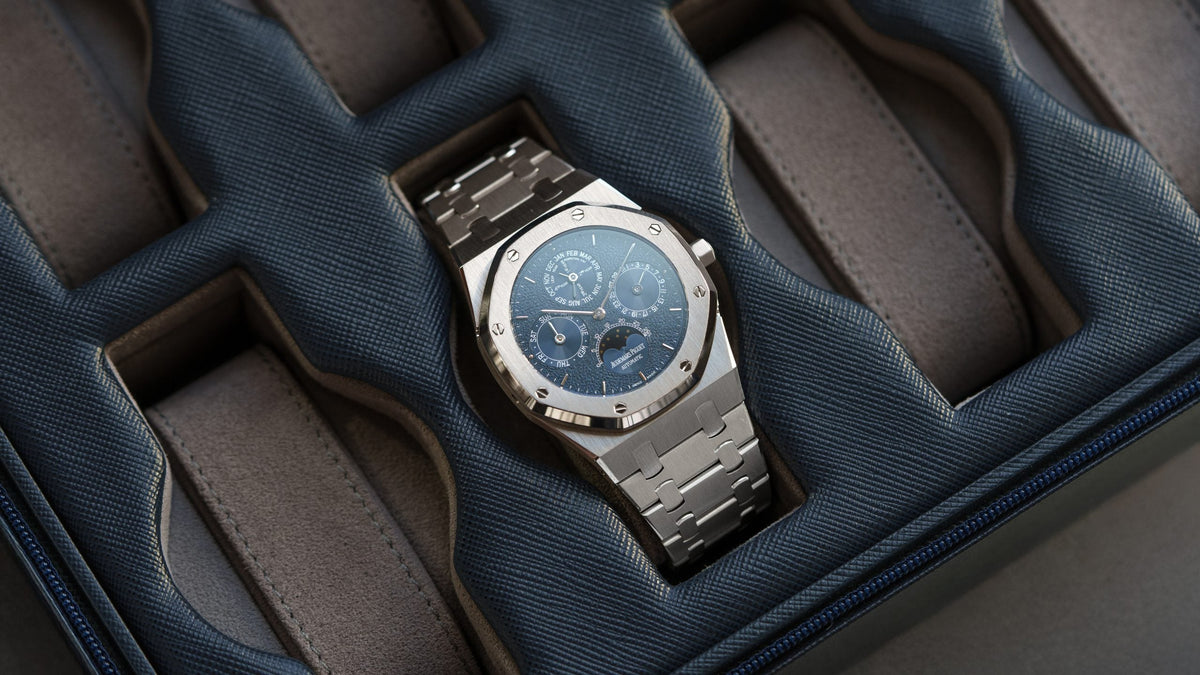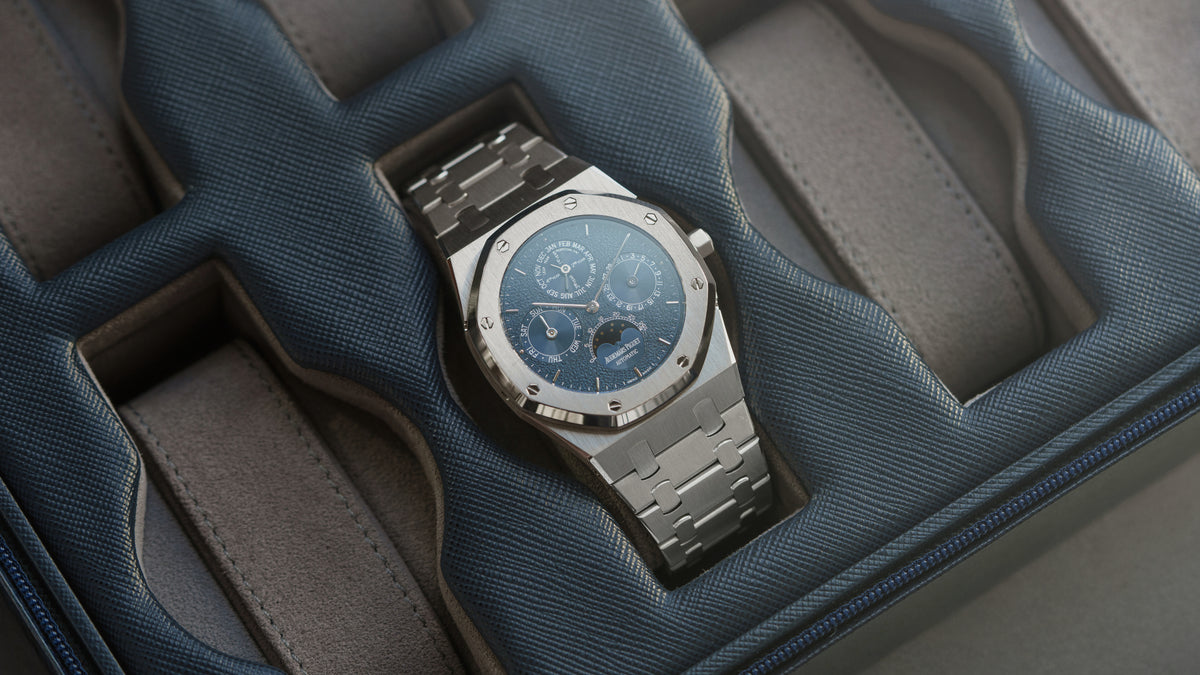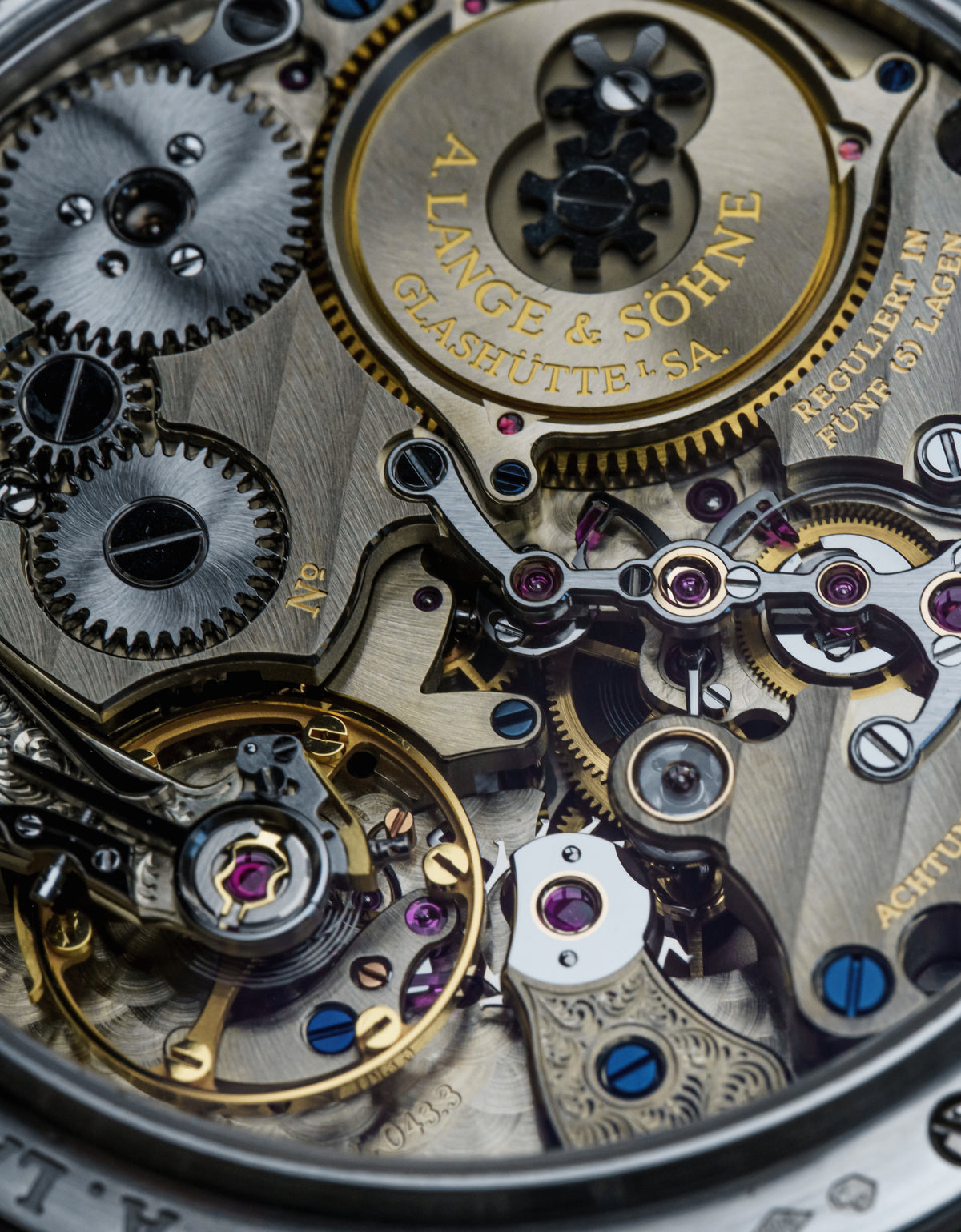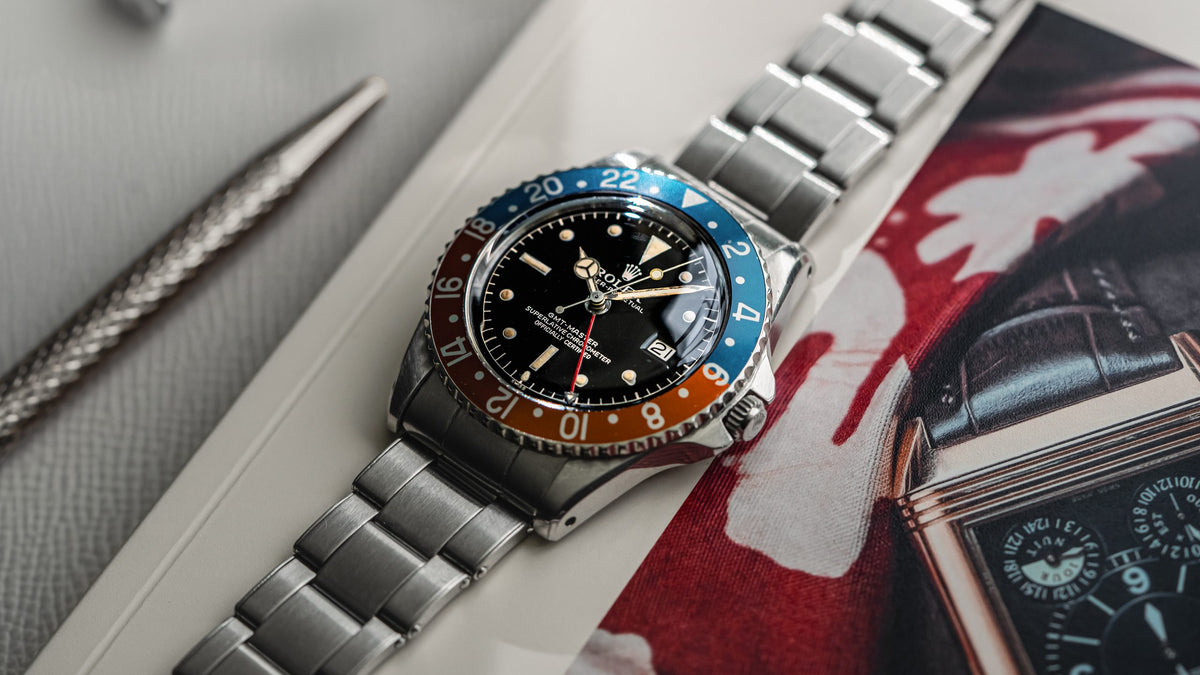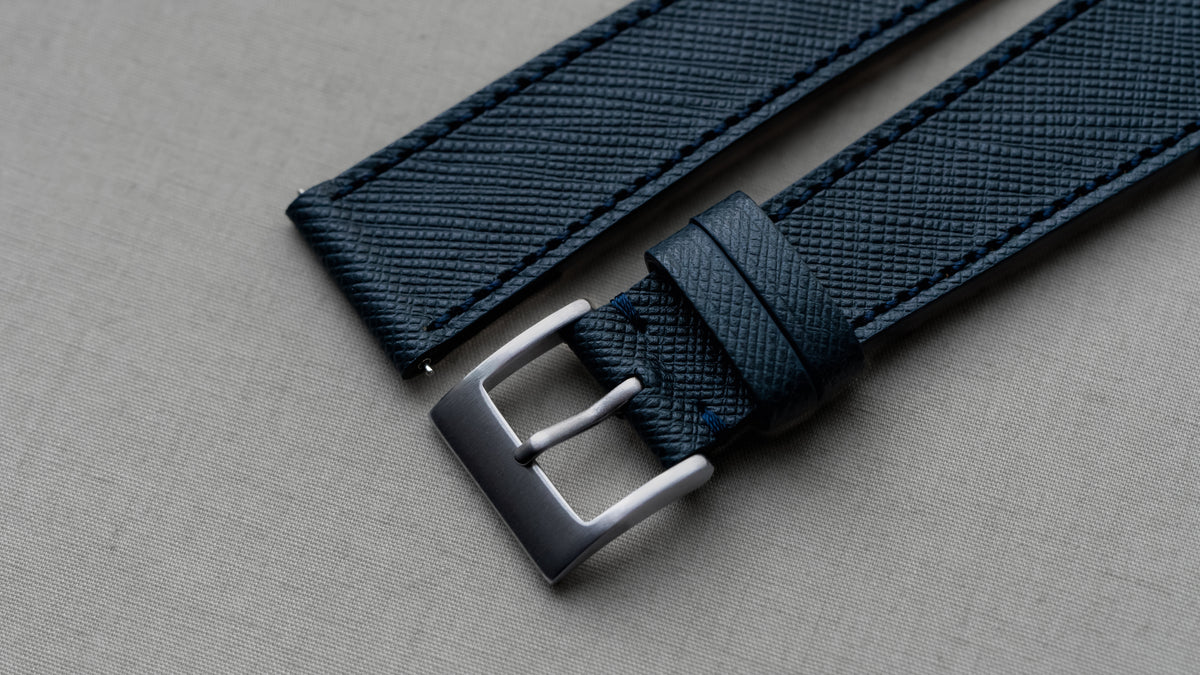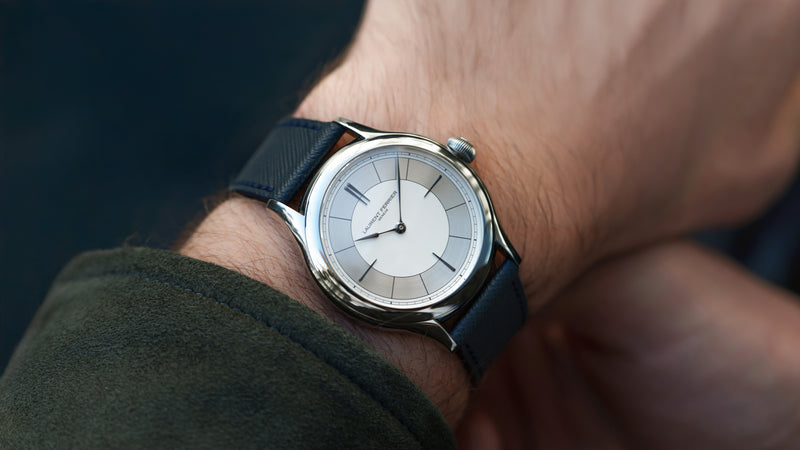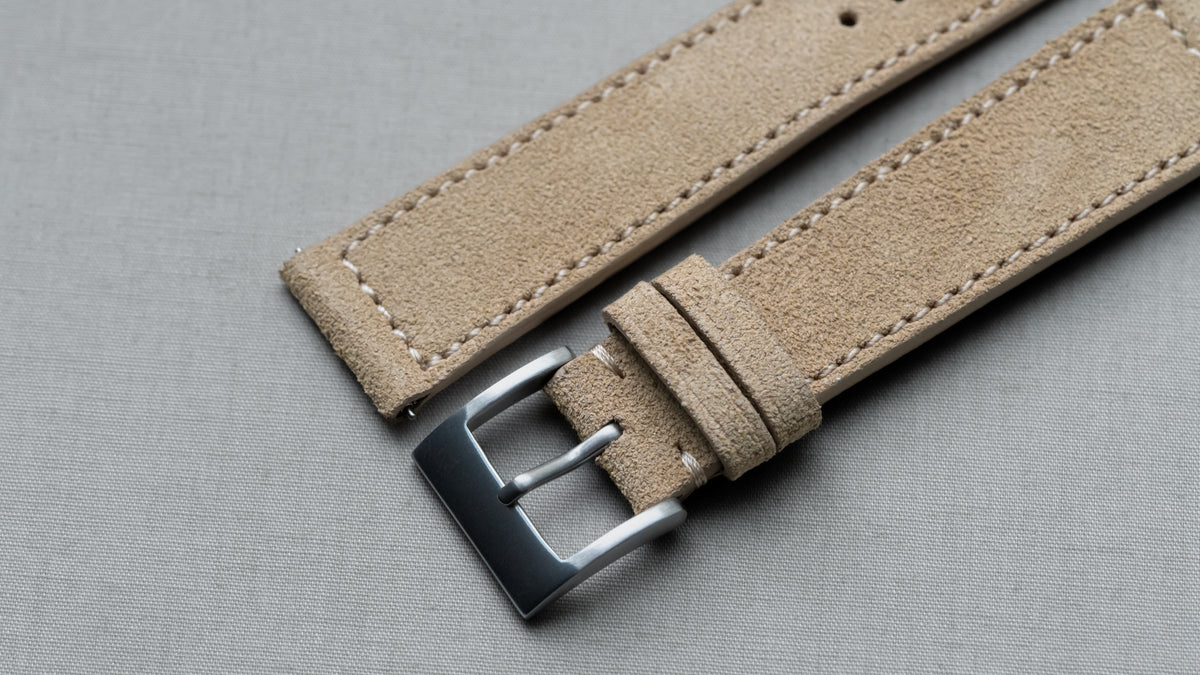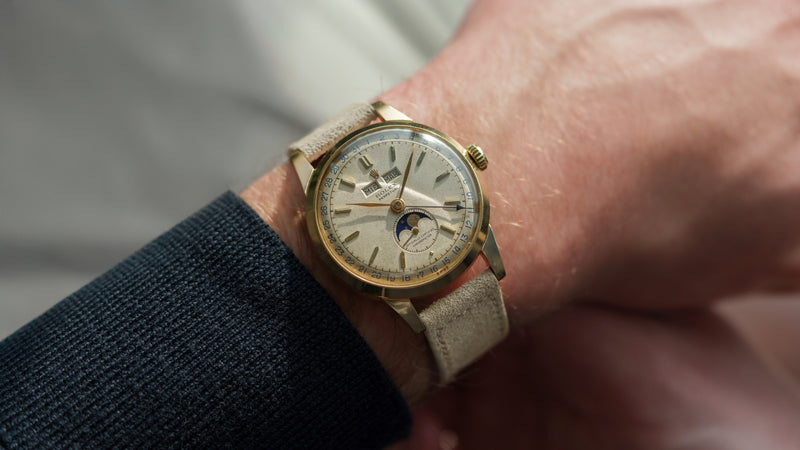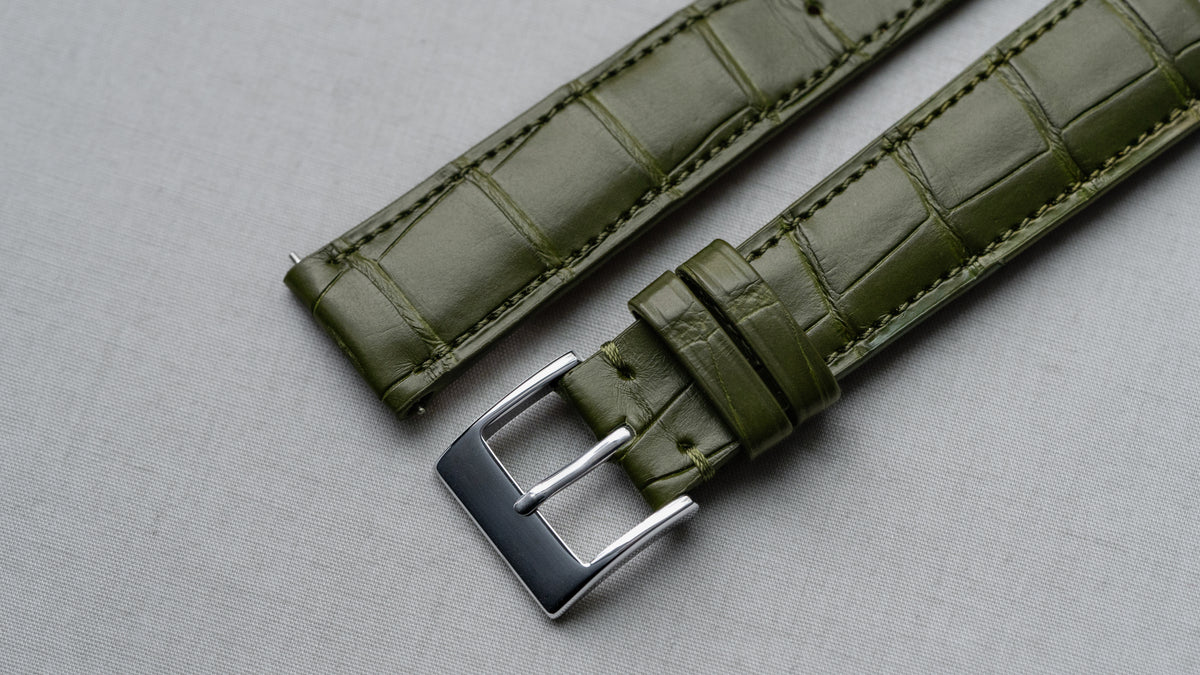1675, Gilt Exclamation Dial, GMT-Master, Steel
A remarkably well-preserved gilt ‘exclamation’ dial 1675 Rolex GMT-Master. This example comes from very early in 1675 production, where a tiny pip of lume was placed under the 6 marker to indicate use of a low-radioactivity luminous blend. The gloss of this example’s dial is perfectly glassy, with cream plots and a beautifully-ghosted early production fat font bezel. Further its case is extremely sharp with a lovely, early pointed crown guard style often called Cornino. It is a gilt GMT-Master for the extremely well versed Rolex scholar and someone who appreciates details with a perfect preservation of light, original patina. A true exemplar of the breed.










